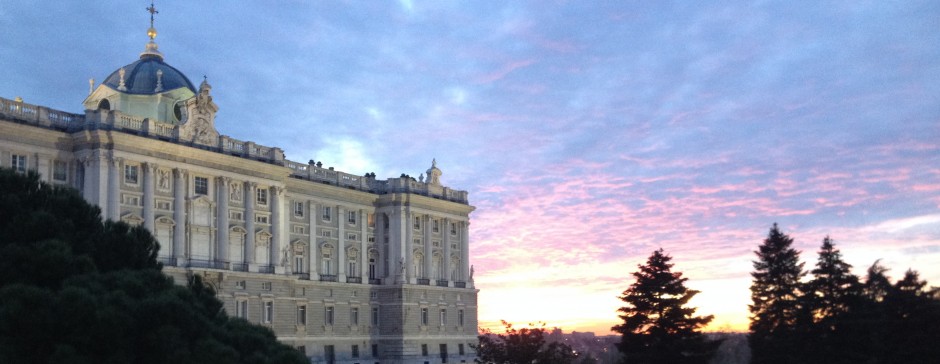As this was one of our last weekends in Madrid for the next month, we decided to take advantage of what the city and surrounding area had to offer, along with the great 23°C weather, with a short day trip to San Lorenzo de El Escorial and a visit to two of the main parks in Madrid, Casa de Campo and the Parque del Oeste.
We visited San Lorenzo de El Escorial as a program on Friday, reminding us again how awesome it is that we are able to go on these quick day trips because we don’t have classes. El Escorial is a town within the Comunidad de Madrid, though outside the capital city, and located near the Guadarrama Mountains that we hiked in January. Though it’s a cute town on its own, the main reason for our visit was the Monasterio de El Escorial that the town is named after, which is a royal residence, a monastery, school, and the main burial site for the Spanish royal family.
El Escorial is a huge complex that was very cool to visit. Felipe II, the Spanish king who ruled the empire when it was probably at its largest, built El Escorial in only 21 years. Fiercely trying to save Catholic Spain from the expansion of the Protestant Reformation, Felipe II worked hard to make his reign and palaces appear austere so they would be less controversial and people would support Catholicism more. He actually named the monastery after San Lorenzo, or Saint Lawrence, to celebrate a military victory at St. Quentin against the French on Lawrence’s feast day. The compound is shaped like a grill, or parrilla, in honor of San Lorenzo’s martyrdom by burning. Felipe included many other religious elements in the creation of his palace, basing many of the designs on Solomon’s Temple and including statues of many Jewish kings like David and Solomon. He actually put the church right in the middle of the building, connecting his private bedroom to the main altar with a window so he could hear mass even when his gout kept him bedridden.
Although we didn’t get to see any monks while at El Escorial, we did get to see the royal crypt underneath the palace and the church. Almost all of the Spanish kings and queens from Carlos V on are buried at El Escorial, including their infantes, the children of the current monarchs born after the prince or princess, and other royal family members. Beyond the graves themselves, we also saw the doors leading to the pudridero, or royal rotting room, where the most recently deceased members of the Spanish royal family, including Don Juan, are decomposing before they can be officially placed in their crypts. Though obviously a tiny bit creepy, it’s very cool to think that, between El Escorial and the Capilla Real in Granda, we’ve now seen the graves of almost all of the monarchs of Spain because Spain as we know it didn’t really exist until after the Catholic Monarchs.
The rest of that weekend was spent was pretty laid back, with a great deal of time spent outside enjoying the warm weather while walking along the streets, chilling in parks, and drinking in the outdoor cafés. Christy and I also finally made it out to Casa de Campo, which is the home to one of the world’s largest urban parks, with its area of 6.6 square miles making it five times larger than New York’s Central Park. The park reminds me a lot of a National Park than a city park, with its huge space and large amount of very tall trees and almost no paved roads. Then again, there aren’t many national parks in which you’d find a zoo and aquarium or a theme park.
The coolest part about the park for me is the teleférico, or aerial cable car, that brings you from the Parque del Oeste into Casa de Campo. This was the main reason we wanted to go to the park, but it was closed on Friday when we first tried to go, so we had to come back on Sunday. The views and different perspective we got of the city, in addition to the fun ride, were definitely worth the return trip though. A few of our friends still want to check it out and if the weather continues to be as nice as it has been lately, we’ll definitely be willing to go back! 🙂

